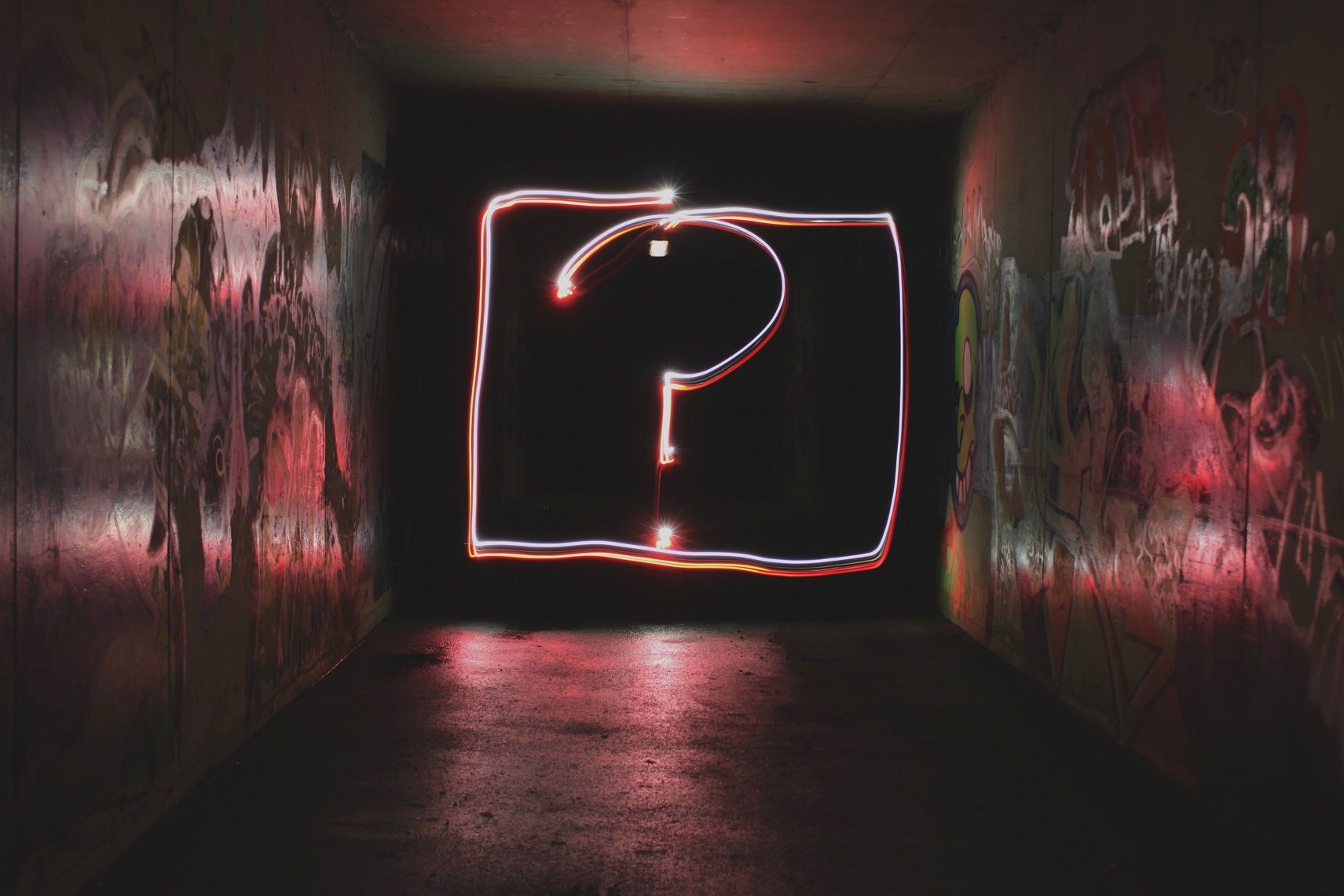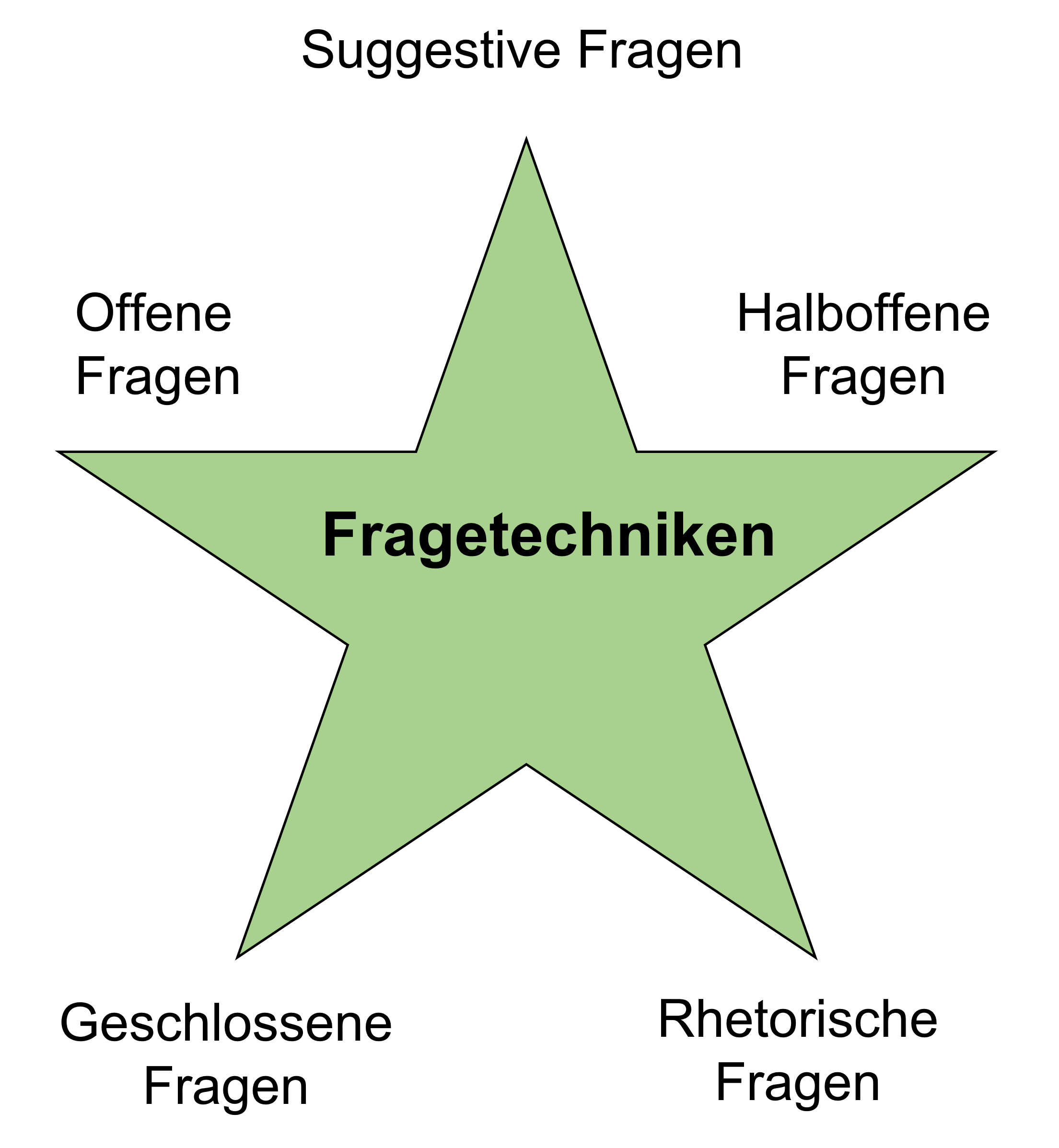Questioning Techniques
With these 5 questioning techniques you stay in the conversation

Whether it's personal or professional, asking questions helps keep a conversation going. It should be noted that a question is not just a question. There are several questioning techniques that aim to steer, guide, and prevent the conversation from bogging down. Supervisors and managers in particular use this in appraisal interviews, management interviews, partner interviews, etc.
But knowing and applying some questioning techniques can also be extremely helpful in private life. Be it in a sales or purchase talk or when negotiating with the mother-in-law where Christmas will be celebrated this year.
It takes a bit of practice to use the right questioning technique at the right moment. But the more you try, the easier it becomes. The aim is to let the respective questioning technique flow into the conversation unnoticed by the conversation partner.

Suggestive Questions
Suggestive questioning is about manipulatively steering the interlocutor in one direction. The interlocutor should have no other option than to give the answer that the questioner wants. The answer is put in the mouth of the person you are talking to, so to speak.
Example: Two friends are talking about where the next men's vacation should take place. One makes his suggestion and ends with the question: "Surely you also want to swim in the sea?"
Other examples are:
- Don't you agree that the beach is better than the pool?
- Don't you agree that...?
- Surely you also want...?
- You probably think the same as me, don't you?
Closed Questions
The aim here is to get short and informative answers. Closed questions are characterized by the fact that the possible answers are given. Usually these are yes/no questions.
Example: Two friends are talking about where the next men's vacation should take place. One makes his proposal clear and ends by asking, "Are you okay with that?"
Other closed questions are e.g. e.g.:
- Do you see it the same way?
- Do you agree with me so far?
- Is this how we want to do it?
- Have I made myself clear to everyone?
Open Questions
In the case of open-ended questions, the interlocutor has - as the name suggests - the opportunity to answer freely and flexibly. He can go into much more detail with his answers, tell more in detail and express his own opinion. The open questions include the so-called W-questions (why, why, why, who, how, where, what, etc...).
Example: Two friends are talking about where the next men's vacation should take place. One makes his suggestion and ends with the question: "Where would you like to go?"
Other examples of the open-ended question are:
- What do you think of this proposal?
- How do you see the whole thing?
- Why do you think so?
- Where did you find the item?
Half Open Questions
Half-open questions are, so to speak, a mixture of closed and open-ended questions. These are used by providing the interlocutor with several answer options, but they can expand and justify them freely. This type of questioning technique is mostly used in written surveys.
Example:
| Where are you going on your next summer vacation? | |
| Sweden | |
| Spain | |
| I stay at home | |
| Miscellaneous | |
Rhetorical Questions
The questioner is not concerned here with an answer. Rather, the answer is already expressed by the question. The rhetorical question has its own statement character. The purpose of a rhetorical question is to influence the other person.
Example: Two friends are talking about where the next men's vacation should take place. One makes his suggestion and ends with the question: "Isn't it obvious that the holiday should take place by the sea?"
Other rhetorical questions are:
- Isn't that laughable?
- Didn't I tell you that right away?
- Don't we all make mistakes?
- Aren't we all a little crazy?